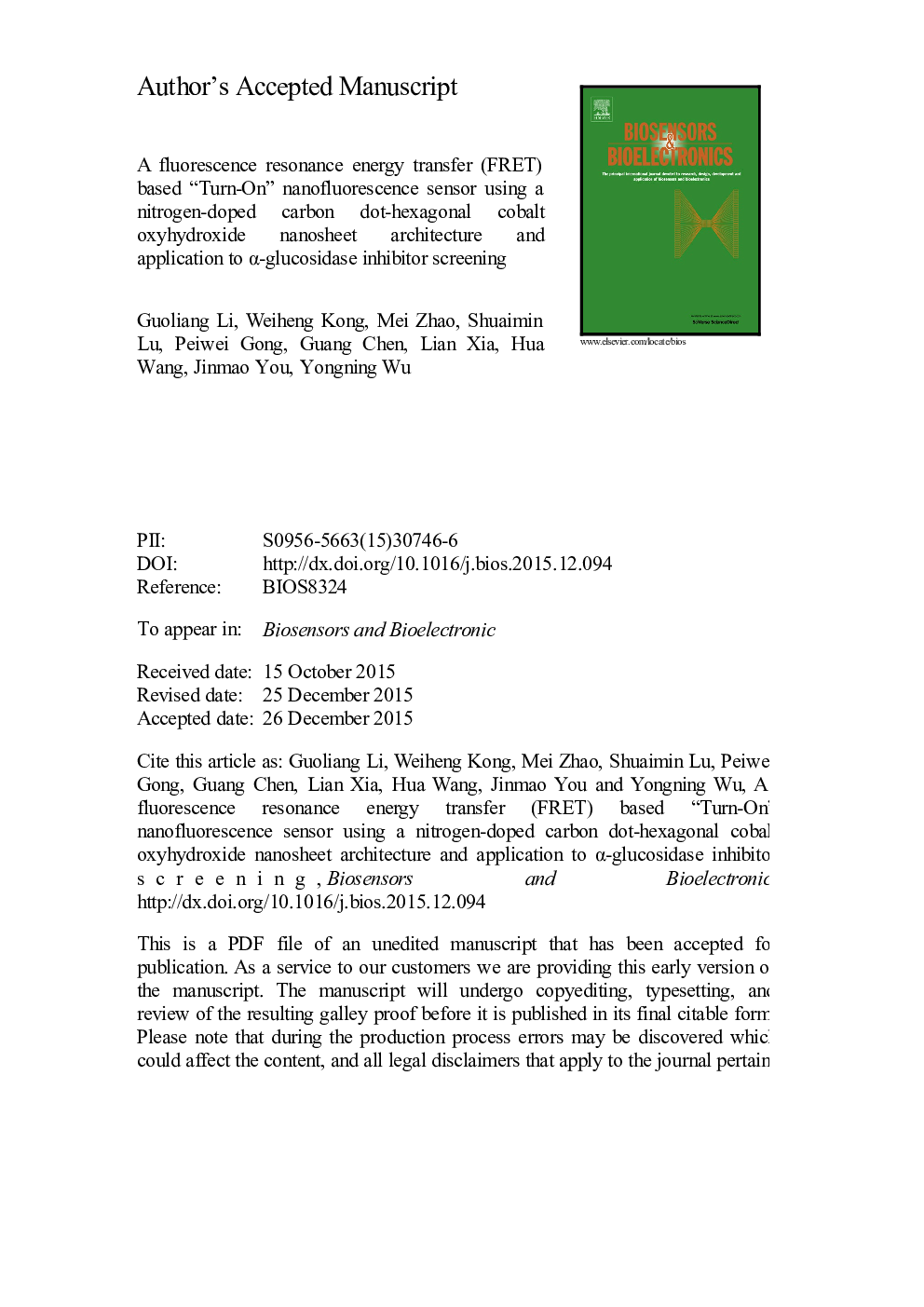| Article ID | Journal | Published Year | Pages | File Type |
|---|---|---|---|---|
| 7231270 | Biosensors and Bioelectronics | 2016 | 19 Pages |
Abstract
The medicines targeted at α-glucosidase played an important role in anti-diabetes and anti-HIV therapy. Unfortunately, the method based on fluorescent assay strategy for α-glucosidase inhibitor screening remains poorly investigated. In this study, a novel “Turn On” fluorescence sensor platform has been developed for trace α-glucosidase inhibitor screening from natural medicines. Firstly, carbon dots were prepared by one-pot synthesis and used as the signal output. Combining with the carbon dots, cobalt oxyhydroxide (CoOOH) nanoflakes were employed to build the fluorescence resonance energy transfer (FRET) based sensor platform. Secondly, L-ascorbic acid-2-O-α-D-glucopyranosyl (AAG) was innovatively introduced as α-glucosidase substrate. With hydrolysis of AAG by α-glucosidase, ascorbic acids (AA) were released that can rapidly reduce CoOOH nanoflakes to Co2+, and then FRET was stopped accompanying with the fluorescence recovery of CDs. The sensor platform was ultrasensitive to AA with a detection limit of 5 nM, ensuring the sensitive monitoring of enzyme activity. Acarbose was used as the inhibitor model and its inhibition rate is proportional to the logarithm of concentration in range of 10â9-10â3 M with the correlation coefficient of R2=0.996, and an ultralow limit of detection of ~1Ã10â9 M was obtained. The inhibiting ability of seven compounds isolated from natural medicines was also evaluated. The constructed sensor platform was proven to be sensitive and selective as well as cost-effective, facile and reliable, making it promising as a candidate for trace α-glucosidase inhibitor screening.
Keywords
Related Topics
Physical Sciences and Engineering
Chemistry
Analytical Chemistry
Authors
Guoliang Li, Weiheng Kong, Mei Zhao, Shuaimin Lu, Peiwei Gong, Guang Chen, Lian Xia, Hua Wang, Jinmao You, Yongning Wu,
